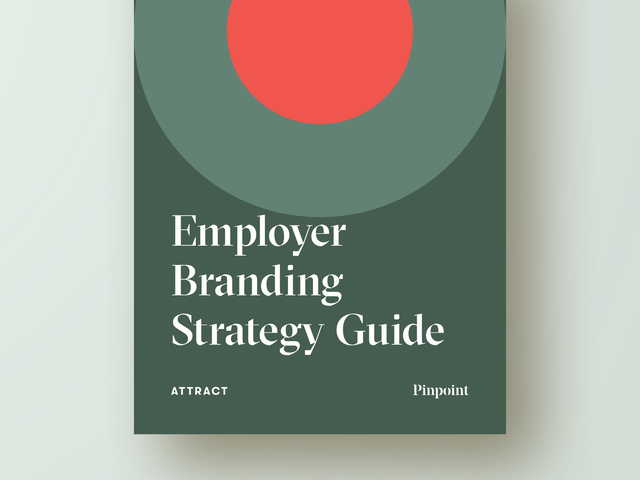
Candidate Personas: The In-House Recruiter’s Guide
Over the past ten years the recruitment market has shifted and the power has moved from the recruiter to the candidate. Companies aren’t “buying” people – they’re selling them on the opportunity to work at your organisation.
What is a candidate persona?
A candidate persona is a semi-fictional representation of your ideal candidate based on market research and real data about your existing team.
A candidate persona typically includes information about:
- their personality
- their past experience
- their skills
- where they learn, e.g. what they spend time reading / watching / listening to
- factors that would encourage them to work for your organisation
- factors that would discourage them from working at your organisation
Free candidate persona template
Get your free template and fast track the creation of your candidate personas.
How many candidate personas do I need to create?
The type of candidate you’re trying to attract (and things they look for in an employer) is likely to differ between department, seniority, and location. Where these differences are significant (for example, if they would change how you target your recruitment advertising or benefits package) you should consider creating a separate candidate persona.
As a rough guide, most of the organisations we work with have between three and five main candidate personas, but several of our larger clients (global organisations with a very diverse workforce) have as many as twenty different candidate personas.
Why are candidate personas so important?
What would it mean to your business if you attracted more of the candidates you’d actually be interested in hiring?
What if those candidates were as excited about working for you as you were about hiring them?
What if the candidates you hired were more engaged and stayed at your organisation longer?
Candidate personas help you understand your team, candidates, and prospective candidates better. This makes it easier for you to:
- Tailor your recruitment advertising and attract more of the best applicants.
- Provide a relevant candidate experience and keep more candidates engaged.
- Tailor your benefits package and employee value proposition to attract and retain the type of people you’re looking for.
Fundamentally, candidate personas help you understand the specific needs and interests of your ideal candidate so that you can improve your employee value proposition, recruitment advertising, and candidate experience.
By attracting the right candidates, you make the right hires and end up with engaged employees who perform 202% better than disengaged employees.
How to create a candidate persona
The good news is that candidate personas are easy to create. It’s just a case of asking the right questions of the right people and presenting that information in a way that is helpful to your hiring teams.
The even better news is that we’ve created a free template for creating candidate personas so you can compile your research into an easy-to-understand format.
Follow along with the rest of this guide and start adding your research to the template. You’ll quickly have your candidate personas ready and you can then move on to improving your employee value proposition.
Gather the information you need
- Look through your candidate database to uncover trends about the types of people that are most likely to apply.
- Speak to your most recent hires and understand what attracted them to apply.
- Even if you’re not hiring, conduct interviews with the types of people you would ideally like to employ in the future to understand their motivations (offering a $50 gift card in exchange for a phone or video interview can work a charm).
- Talk to your hiring managers and get feedback about the types of candidates they are having most success with. What generalizations can they make about these candidates?
- Conduct an employee satisfaction survey and get feedback about what’s important to your existing team.
Questions to ask when developing candidate personas
Describe your educational background
What level of education did they complete? Where did they study? Do they have industry specific qualifications?
Describe your career so far
Where have they worked in the past? What job titles have they had? How senior are they now? How quickly have they progressed to their current position? How often do they change job? Have they switched from another industry in the past?
What made you get into this industry?
Is it about the work? The flexibility? The type of people they spend their time with? A personal passion?
What size of company do you work at?
How many staff? How many locations? What is the current revenue?
Describe your current role
Make a note of any keywords or industry-specific language they use. Are they an individual contributor or are they a manager? How is this reflected in their job title?
How is your performance measured?
Understanding how your ideal candidate’s performance is measured where they currently work will help you to address any anxieties they might have about how this might change. Perhaps they are under-resourced and struggling to meet their targets in their current role and you can offer them the right tools to do their job much better at your organisation.
What does a typical day look like for you?
Encourage them to provide information about their life inside and outside of work. Do they have a family? How long is their commute? Is finding childcare for kids in school holidays a nightmare? Do they make time to go to the gym?
What skills and tools do you use in your current role?
What software do they use? What skills have they learned? How did they learn them? How often do they use these? Information like this can help you to target your recruitment advertising to the right audience, especially when using digital recruitment channels.
What are your biggest personal and professional challenges?
Again, you’re looking for things that your company already offers that will make a difference to the type of candidate you want to attract.
What are your goals?
Again, these can be personal or professional. Are they looking for job security so that they can buy a house? Do they need to maintain the same level of benefits they currently have around medical insurance because one of their family is ill? Do they want to learn a new skill? Set up their own business in the future? Want to work closer to home to spend more time with family? Want to travel the world?
How do you learn new information for your job?
If you’re going to be doing any form of recruitment advertising, it helps to know where your ideal candidates spend time learning so that you can advertise in those spaces. Do they use websites, forums, industry publications? Do they use social media? Do they rely on Google searches? Which blogs do they read? Which podcasts do they listen to? Do they attend industry conferences? Which industry leaders do they follow?
Where do you look for new job opportunities?
Again, answers to this question will give you some great ideas for places to advertise that might not be on your radar yet.
Talk me through a recent interaction with a potential employer
What did they like about the application process? Did they get an interview? Why did (or didn’t) they accept the job?
Free candidate persona template
Get your free template and fast track the creation of your candidate personas.
Use your research to create a candidate persona
Now that you have some information about your ideal candidate, it’s time to fill in your candidate persona template so that all of your research is brought together in a format that anyone in your hiring teams can quickly understand.
You’ll begin by trying to identify any common patterns in your research. What benefits are most important to your most successful team members? What is it that attracts people to apply to work at your organisation?
Then it’s a case of completing the candidate persona template for each of your candidate personas. Begin by completing the basic information for your persona. What job titles, departments, seniorities, and locations does this candidate persona cover?
Here’s an example of how you might fill in section one of your persona template:
Professional Experience
Being clear about the type of professional experience your target candidate is likely to have will help you to precisely target your recruitment advertising. For example, automated recruitment advertising will allow you to target people who currently work for specific companies, or who have specific qualifications.
Things you might include under professional experience are:
- Current and past employers
- Qualifications
- Current and past job titles
- Current level of seniority
Personal Preferences
Understand what type of environment your ideal candidate enjoys. Do they like a collaborative workspace or a private office? Do they like lots of direction or do they prefer to be left to get on with their work? What are their values? What drives them to want to do better?
Motivations
What makes your ideal candidate tick?
Think about the challenges that your ideal candidate has. Do they need to work flexible hours because they need to drop their children at school? Are the best potential candidates for a specific role located far from your office(s)? If so, do they need the flexibility to work from home? What about travel allowances to come and meet the team or an allowance to help them set up their home office for maximum productivity?
Then think about their goals and interests. Are they looking to grow their skills in a particular area and need support with training? Are they looking forward to working on more challenging projects? Are they looking to work in a more relaxed environment?
Your answers to this section will help you to differentiate your employee value proposition. Identify the things that your organisation offers that will be attractive to this type of candidate under “What can we do?”.
Here’s how you might go about filling in this section:
Objections
What is it that stops potential candidates applying for a role? If they applied and subsequently received an offer, what would likely stop them from accepting that offer?
Some of the major objections we see are at the application stage are:
- Concerns about confidentiality – will word get back to their current employer that they’re job-hunting?
- Concerns about when interviews will be – will they have to take a day of annual leave to attend an interview about a job they aren’t even sure they want yet?
- Lack of information about the job itself leading to concerns about whether they are just wasting everyone’s time by applying because they aren’t sure the job will be right for them.
- Concerns about the organisation. Will they like their team? Will they like their new boss?
- If they role requires relocation, will they like their new environment? What support will you provide?
- What will the workload and working hours be like? How flexible is the organisation?
Your objective should be to address these concerns head-on through your careers website, job descriptions, and other recruitment marketing materials. Expect to see the number of quality applications increase as you begin to proactively address the questions and concerns that your ideal candidates have.
Behaviour
By understanding where your ideal candidates spend their time, you’ll be better placed to know where to find them and how to show them the great opportunities available at your organisation.
Consider things like:
- What social media networks they use
- What blogs they read
- What podcasts they listen to
- What brands inspire them
- Where they look for jobs
Real Quotes
Include some real quotes from your research that sum up, in your target audience’s own words, what they’re looking for in a role.
Elevator Pitch
Taking into account everything above. How would you pitch an job opportunity to this persona in a way that would make them want to apply? The four key elements of a recruitment elevator pitch are:
- Who you are, what you do, and why
- One key element of your unique employee value proposition relevant to the target persona
- One or two key characteristics of your ideal candidate
- A summary of why your company is a great place to work
- A call to action
For example:
We’re [Company], [very brief description of what company does and why]. We’re looking for a [full-time, part-time, freelance] [job title] at [location].
This role is unique because [main thing that sets this role apart from any others the candidate might be looking at].
We’re looking for someone who [a key characteristic of your ideal candidate about your ideal candidate].
[Company] is a great place to work because [something great about your company that will resonate with your ideal candidate].
Interested? You can find our more or apply through our recruitment website here: [link]
Free candidate persona template
Get your free template and fast track the creation of your candidate personas.





